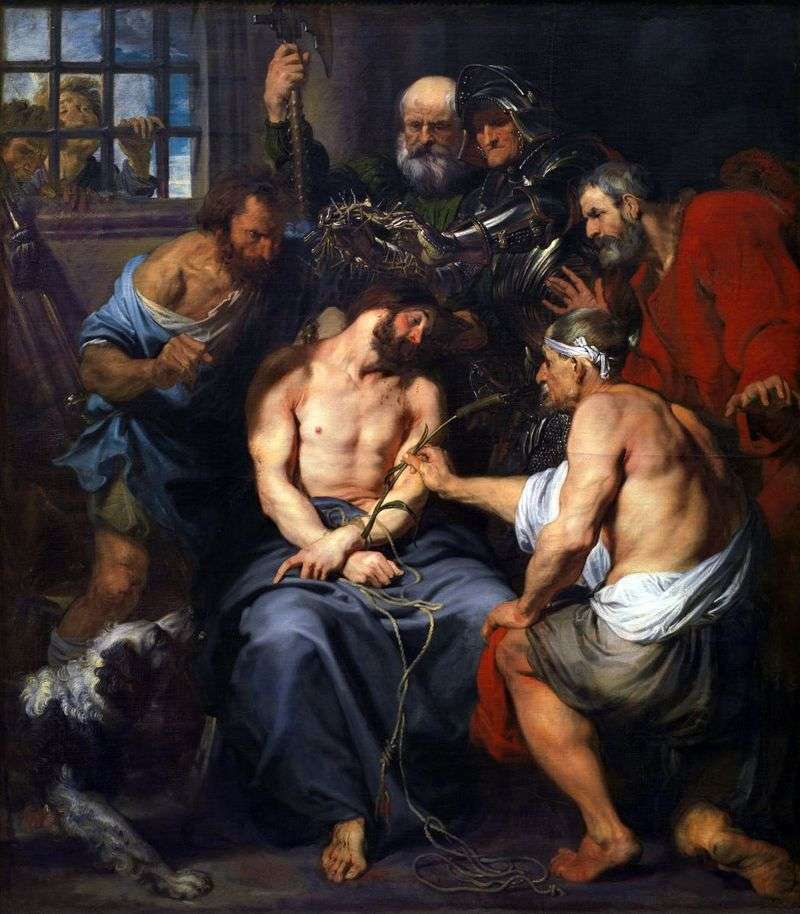
“Crowning with a crown of thorns” is written by a very young, eighteen-year-old artist, but, nevertheless, differs with great mastery of performance. In works on religious themes, Van Dyck is diligently searching for exact compositional solutions that allow him to connect material corporeality with restrained expression of images.
The painting depicts Christ surrounded by his executioners. The nude figure of the suffering Savior is highlighted with light. The lower part of his body is covered with a dark blue cloak, shading a beautiful mighty torso and kneeling bound hands. Head in agony bent to the shoulder. The wind, chained in armor, with a terrible grimace on his face trying to lay a crown of thorns. Behind him stood the figure of the old man leaning on the halberd with an expression of doubt on his face. Attention of all participants in this scene is riveted on Christ.
To the left of Christ is a half-naked guard kneeling on one knee, and a man in red, watching what is happening and wanting something to say with the gesture of his hand. Behind the right shoulder of the Savior is a figure in a blue tunic. The facial expression of this character does not bode well; the dog at his feet barked fiercely at Christ. Behind the grate are the faces of the curious… All – and the faces of the executioners, and the texture of the fabrics, and the glitter of the armor – are written with great skill.
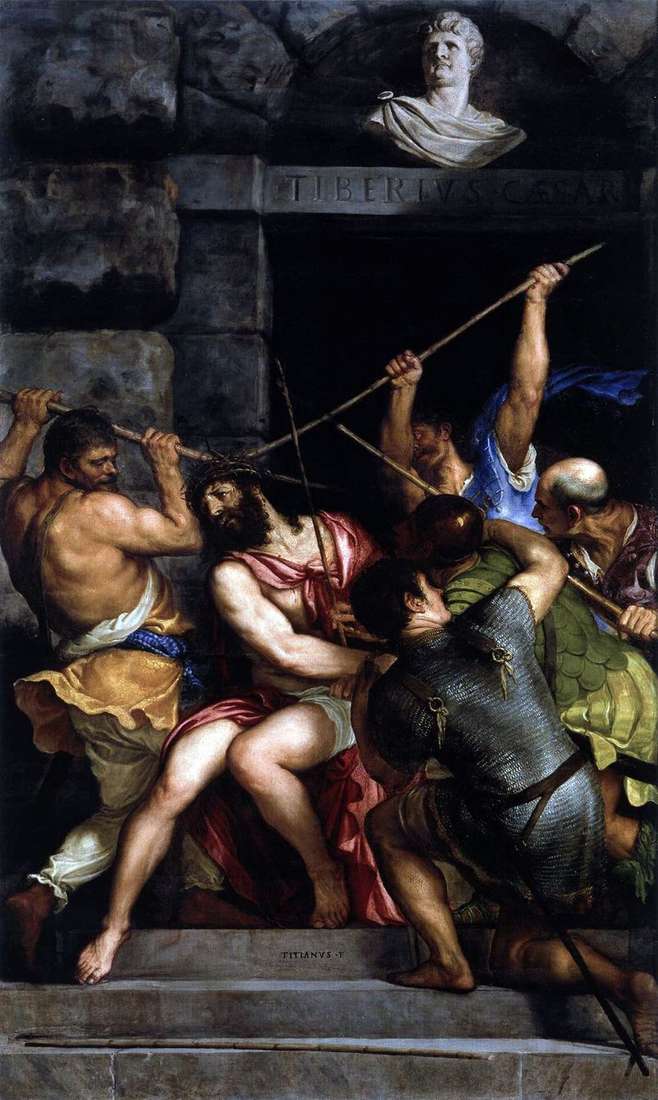 Crowning with thorns by Titian Vecellio
Crowning with thorns by Titian Vecellio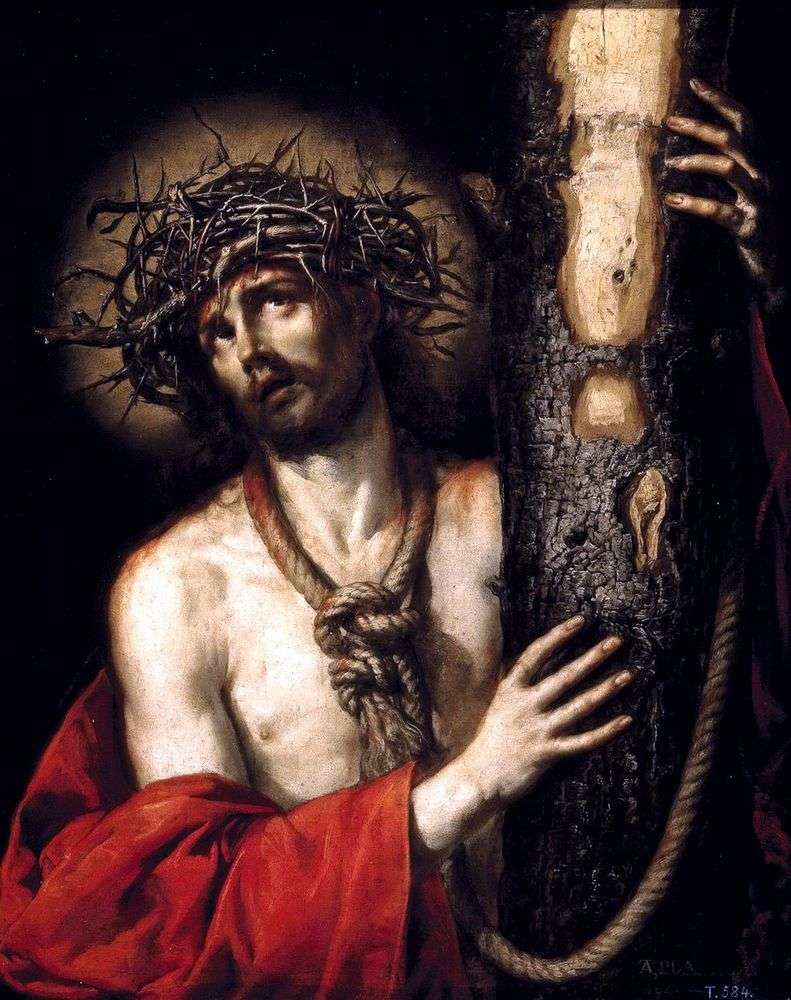 Crowning with a Crown of Thorns by Antonio de Pereda
Crowning with a Crown of Thorns by Antonio de Pereda Crowning with thorns by Michelangelo Merisi and Caravaggio
Crowning with thorns by Michelangelo Merisi and Caravaggio Crowning with thorns by Hieronymus Bosch
Crowning with thorns by Hieronymus Bosch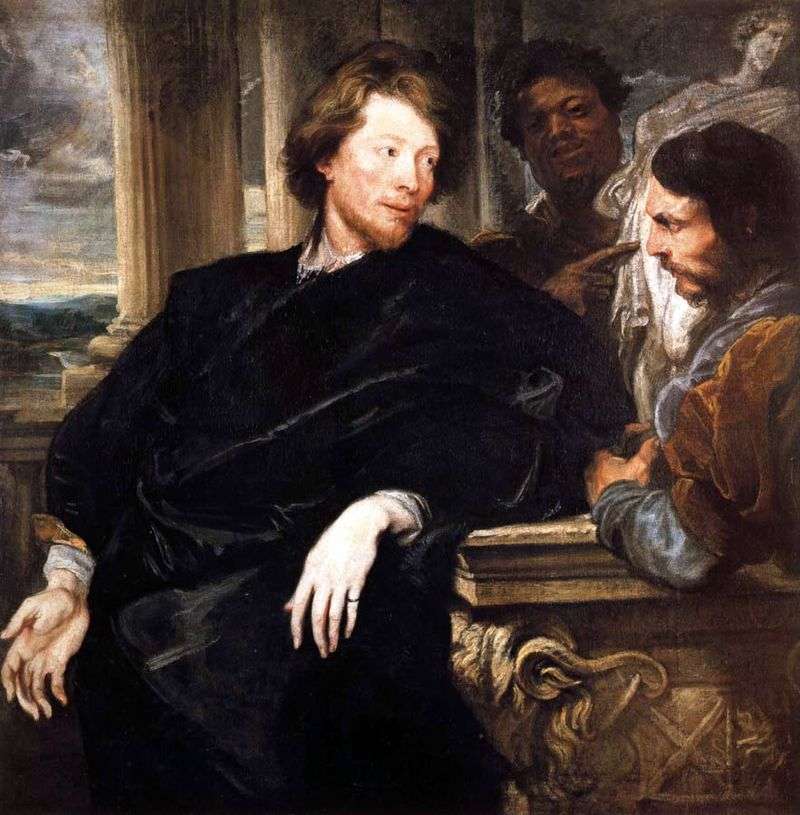 George Gage with two assistants by Anthony Van Dyck
George Gage with two assistants by Anthony Van Dyck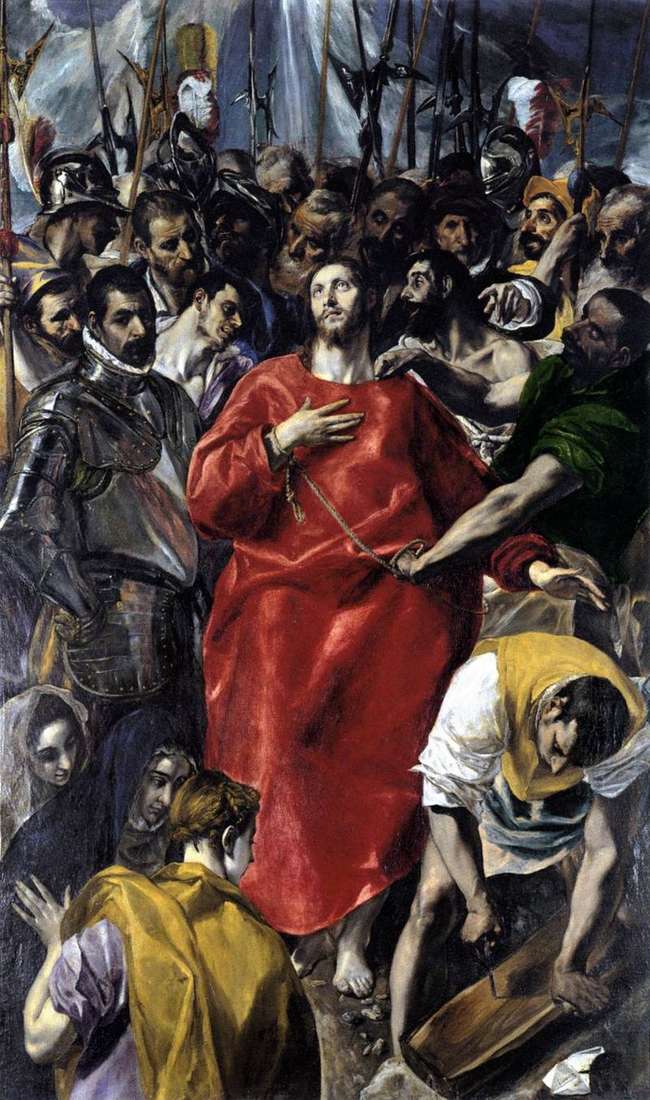 Removing clothes from Christ (Espolio) by El Greco
Removing clothes from Christ (Espolio) by El Greco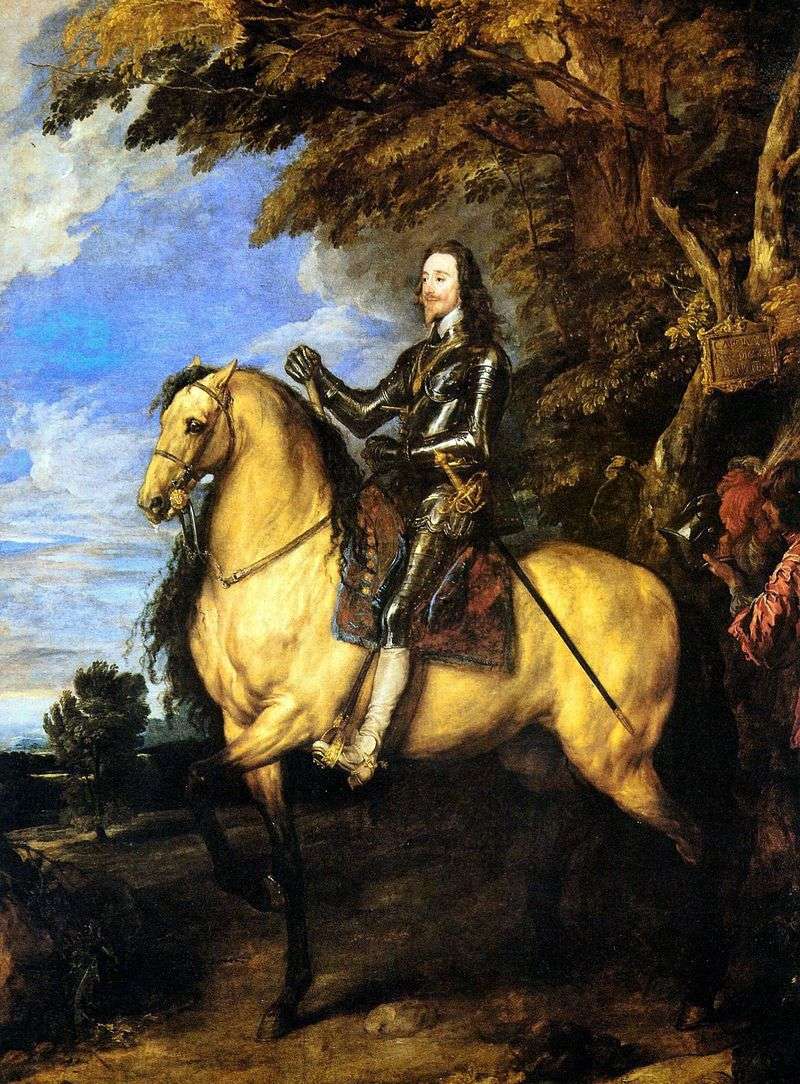 Equestrian portrait of Charles I by Anthony Van Dyck
Equestrian portrait of Charles I by Anthony Van Dyck The Murder of Christ by Hans Holbein
The Murder of Christ by Hans Holbein